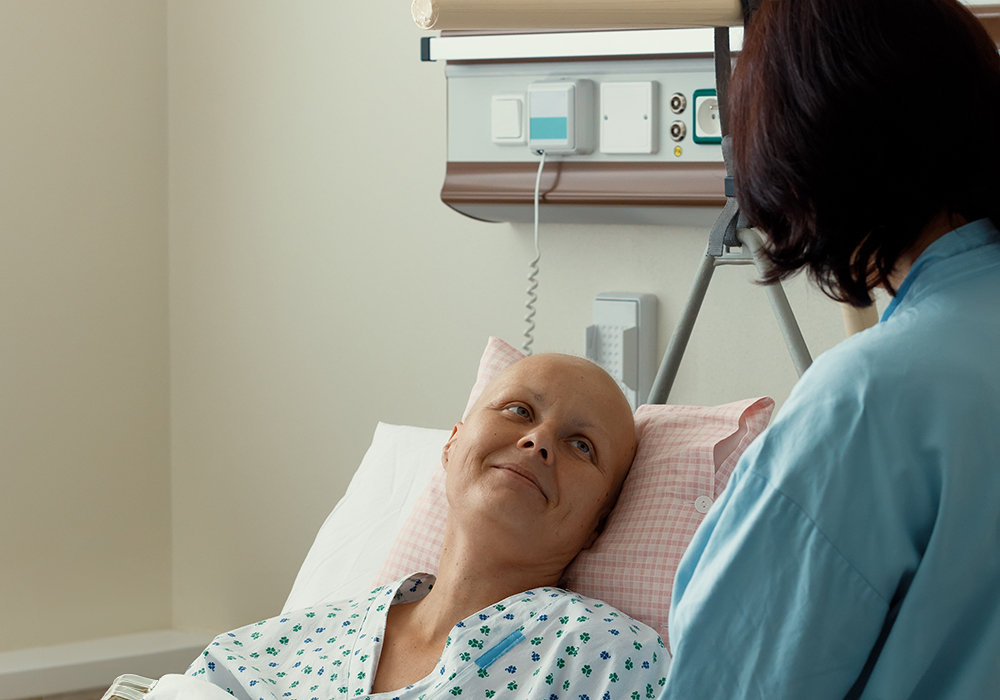As chemotherapy administration has shifted from IV delivery in the infusion center to oral delivery at home, so has the burden for the five rights of medication administration. No longer are trained healthcare personnel responsible for ensuring the right patient receives the right drug at the right dose and time by the right route; instead, patients and their caregivers bear the responsibility for oral medications. Failure to do so opens the door to adherence issues and compromises safety.
The oncology nurse’s role now involves equipping patients and caregivers for this duty. Nurses use special teaching information, medication diaries, dose monitoring, follow-up calls, and other techniques to ensure adherence, but to date no national U.S. data existed about oral chemotherapy use in the outpatient setting.
In their article in the January 2014 issue of Oncology Nursing Forum, Roop and Wu discussed the results of a U.S. survey exploring nursing practices related to care and safety of patients who are taking oral chemotherapy in an outpatient setting. The study specifically looked to uncover the challenges in current practices for oral chemotherapy treatment and to identify the common barriers to adherence among patients.
Survey of U.S. Settings About Chemotherapy Practices
Roop and Wu conducted the survey online among 577 ONS members who worked in outpatient settings in the United States. It revealed the following results.
Policies and procedures: Fifty-one percent of the oncology practices had policies, procedures, or guidelines for managing patients receiving oral therapies, but 47% said that no polices or procedures existed for documenting patient adherence to oral medications. Practices with policies, procedures, or guidelines scored higher on almost every measure than practices without such guidance.
Resources for patients: Sixty-eight percent of the respondents said that their practices offered adequate patient education materials, 66% had lists of specialized pharmacies for patients to fill their prescriptions, and 75% offered financial resources for patients.
Figure 1. Strategies for Managing Patients Receiving Oral Therapies
- Maintain a weekly call list for each patient.
- Develop standardized documentation forms for telephone calls that include administration instructions, precautions, monitoring of adverse effects, and other important information.
- Schedule patients for two education appointments prior to prescribing oral chemotherapy.
- Schedule routine follow-up phone calls 48 hours after or follow-up office visits one week after the beginning of chemotherapy.
- Provide classes for nurses and add oral chemotherapy as an annual competency.
- Dedicate a full-time or part-time nurse only to patients on oral therapies. In some settings, the nurse may need to be bilingual.
- Develop a workflow where an oral chemotherapy prescription automatically triggers an education appointment with a nurse or pharmacist.
- Assign an oral chemotherapy coordinator to help patients navigate the process of obtaining and paying for their drug.
Resources for nurses: Most of the nurses (84%) agreed that they had enough knowledge about oral chemotherapy to provide safe care for patients. Sixty-seven percent of the nurses reported that their practices provided adequate educational resources for nurses about oral chemotherapies.
Seventy-one percent said that they had enough time to teach patients and caregivers about oral therapies, but only 56% said that their workplace had a reliable system to notify nurses when patients receive prescriptions for oral chemotherapy.
Common barriers to adherence: According to the survey, cost of medication (81%) was the largest barrier to adherence, followed by medication side effects (72%) and complex instructions about taking the medication (41%). Many of the nurses (37%) didn’t think their patients would notify their healthcare providers if they stopped taking their oral therapies, so the nurses wouldn’t have the opportunity to find solutions to the barriers.
Open-Ended Comments About Oral Therapies
In addition to the multiple choice questions, the nurse respondents had the opportunity to provide open-ended comments about oral therapies in their practice settings. The comments were grouped into the following themes.
Fragmentation of care: Cancer centers and infusion practices have established support and workflows in place for IV chemotherapy administration. The same isn’t currently available for oral treatments. One survey respondent who said that no policies or procedures were in place for providing teaching, follow-up, and regular assessment during oral therapy remarked, “I think, more often than not, oral patients are slipping through the cracks.”
Coupled with this is inconsistent communication among the healthcare team. Prescribers may not remember the need for patient teaching and therefore don’t schedule time for nurses to teach. Nurses may not be informed that a patient is receiving oral chemotherapy until that patient calls the triage nurse with a problem. In some cases, electronic medical records even hindered efficient communications, limiting ways of flagging charts, noting side effects, and interfacing with older paper charts.
Delays and expenses: Lengthy delays may occur between prescribing oral treatments and patients receiving their medication, negating the effectiveness of teaching at the time the drugs are ordered. The respondents reported difficulty assessing which patients needed to be re-educated and what content they had forgotten. In addition, the prohibitive cost of the treatments for patients was distressing, particularly when older adult patients had to choose between using their life savings to obtain their medication or protecting the savings for a surviving spouse’s needs.
Education and resources: Despite high percentages of nurses reporting that they had the knowledge to safely care for patients receiving oral therapies, the open-ended comments revealed that many felt they and their colleagues were inadequately prepared regarding oral chemotherapy. A nurse educator cited the restrictions between pharmaceutical companies and nurses as a barrier to receiving sufficient information.
Nursing time: Repeated comments noted the amount of time it takes for nurses to care properly for patients receiving oral therapies. Because the regimens can be complicated, patients often need to be taught the same information more than once. “It seems no matter how much information I give in a variety of formats, patients are human, and they forget to follow the specific instructions. This occurs even when this is all written out for an English-speaking, literate patient. Sometimes I feel like I am banging my head against the wall,” one respondent said. In addition, nurses had to follow cumbersome procedures to obtain payments or patient assistance.
Patient barriers: All of the barriers to adherence to other medications are present for patients taking oral chemotherapies, including forgetfulness, inability to swallow pills, difficulty with adverse effects, and so on. One respondent suggested that patients be screened for their ability to adhere to oral chemotherapy.
Potential Solutions to Oral Therapy Concerns
As part of the comments, nurses shared the solutions they’d found to manage the concerns and problems listed previously. Common organizational tools—prefilled medication boxes, patient diaries, calendars with medication schedules, bloodwork appointments, and follow-up appointments—all offered moderate success. See Figure 1 for additional strategies.
For more information on the survey results, refer to the full article by Roop and Wu. To learn more about oral chemotherapy, check out the ONS/American Society of Clinical Oncology chemotherapy administration standards or the new ONS/ONCC Chemotherapy Biotherapy Certificate Course.
Five-Minute In-Service is a monthly feature that offers readers a concise recap of full-length articles published in the Clinical Journal of Oncology Nursing or Oncology Nursing Forum (ONF). This edition summarizes “Current Practice Patterns for Oral Chemotherapy: Results of a National Survey,” by Janna C. Roop, RN, PhD, CHPN, and Horng-Shiuann Wu, RN, PhD, which was featured in the January 2014 issue of ONF. Questions regarding the information presented in this Five-Minute In-Service should be directed to the ONF editor at ONFEditor@ons.org. Photocopying of this article for educational purposes and group discussion is permitted.






